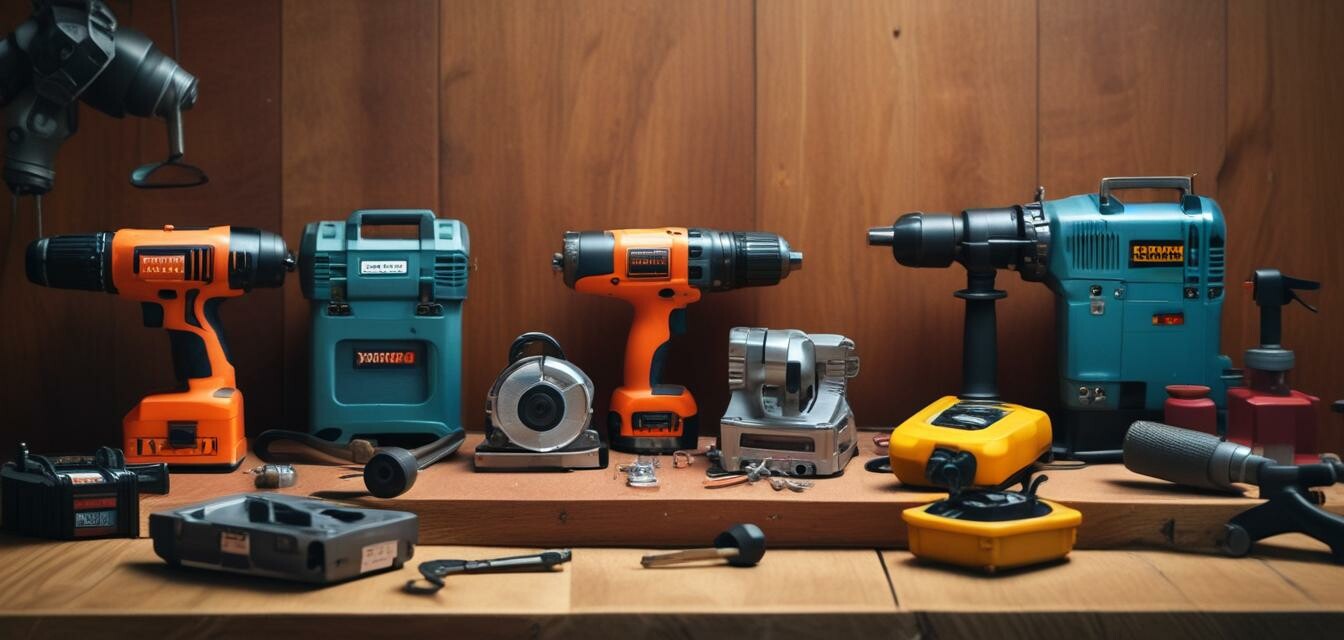
Best Power Tools for Beginners in 2025
Key Takeaways
- Prioritize safety features when selecting power tools.
- Look for user-friendly designs ideal for beginners.
- Wattage and battery life are crucial for performance.
- Consider versatility: multi-tools can serve multiple functions.
- Always check customer reviews for insights on performance.
Getting started with power tools can be a daunting experience, especially for new contractors or DIY enthusiasts. In this guide, we’ll help you navigate the best power tools for beginners in 2025, highlighting key features and benefits. Whether you're working on home improvement projects or professional applications, this article should assist you in making informed choices.
Why choose beginner-friendly power tools?
For those entering the world of DIY or contracting, it’s essential to select tools that are not only affordable but also easy to operate. Beginner-friendly power tools often have increased safety features and simplified designs, which reduce the learning curve and help users avoid injuries.
Features to consider
- Safety: Look for tools with safety guards and automatic shutdown features.
- Weight: Lighter tools can help prevent fatigue during extended use.
- Battery life: Cordless tools with long battery life offer more flexibility.
- Ergonomics: A comfortable grip can significantly enhance your control and precision.
Best Power Tools for Beginners
1. Cordless Drills
Cordless drills are one of the most essential tools for any beginner. They are versatile and can be used for various tasks, from drilling holes to driving screws.
2. Portable Saws
Portable saws allow for quick cuts without the need for bulky equipment. They are perfect for both wood and metal cutting.
3. Angle Grinders
Angle grinders are ideal for grinding and polishing surfaces. Their portability makes them perfect for on-the-go work.
4. Sanders
Sanding tools enable smooth finishes on wood and other materials, making your projects look professional and polished.
5. Multi-Tools
Multi-tools can accomplish many tasks which save space and are often more cost-effective for beginners.
Comparison of Essential Power Tools
| Tool Type | Key Features | Best For |
|---|---|---|
| Cordless Drills | Lightweight, rechargeable, variable speed | Drilling and screwing in tight spaces |
| Portable Saws | Compact, easy to use, various blade types | Quick and mobile cutting tasks |
| Angle Grinders | Versatile, powerful, safety guards | Grinding, polishing, and cutting |
| Sanders | Dust collection, variable speed, ergonomic design | Smoothing surfaces before painting |
| Multi-Tools | Multiple attachments, compact design | Various jobs including cutting and sanding |
Safety tips for using power tools
- Always read the manufacturer’s instructions before use.
- Wear appropriate safety gear, including gloves and goggles.
- Ensure your workspace is free of clutter and hazards.
- Disconnect tools when not in use.
- Practice on scrap material before starting on actual projects.
Where to look for more information
For more in-depth guides regarding specific types of tools, check out our Buying Guides category. Additionally, for the latest trends in portable power tools, visit our News and Trends page.
Conclusion
Selecting the right power tools as a beginner is crucial for both safety and efficiency. By picking tools that are user-friendly, versatile, and safe, you will set yourself up for success in your DIY and contracting endeavors.
Pros
- User-friendly features.
- Enhanced safety mechanisms.
- Versatile options that can handle various tasks.
- Compact designs which are easy to handle.
Cons
- Some tools may lack advanced features.
- Budget options may not perform as well as higher-end models.
- Limited warranty on entry-level tools.
